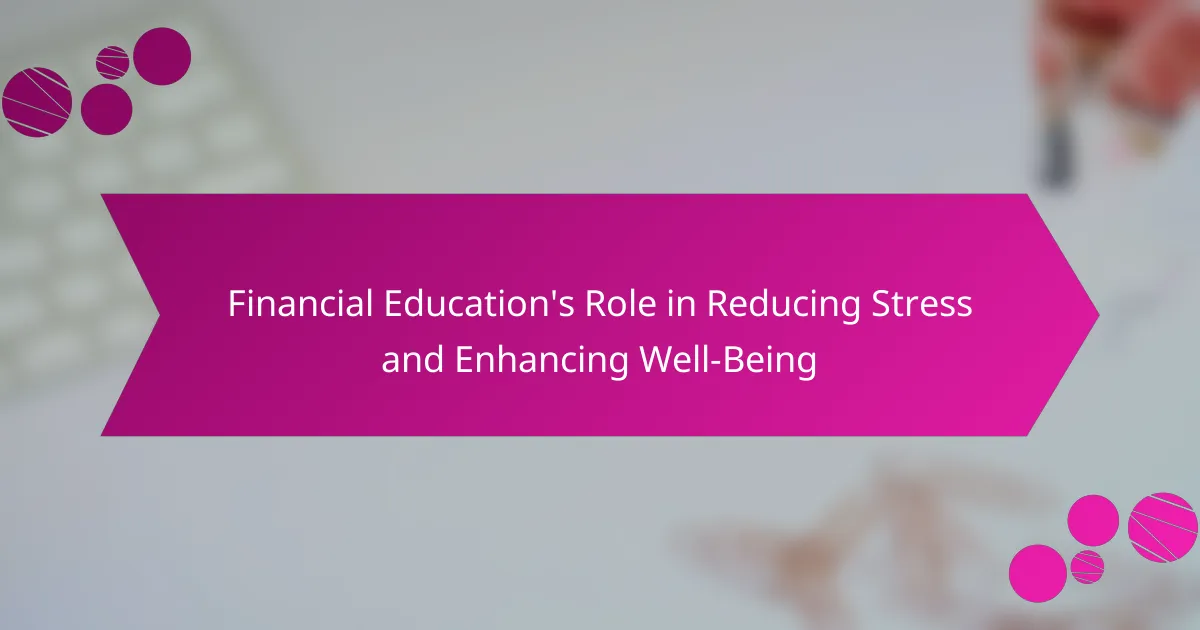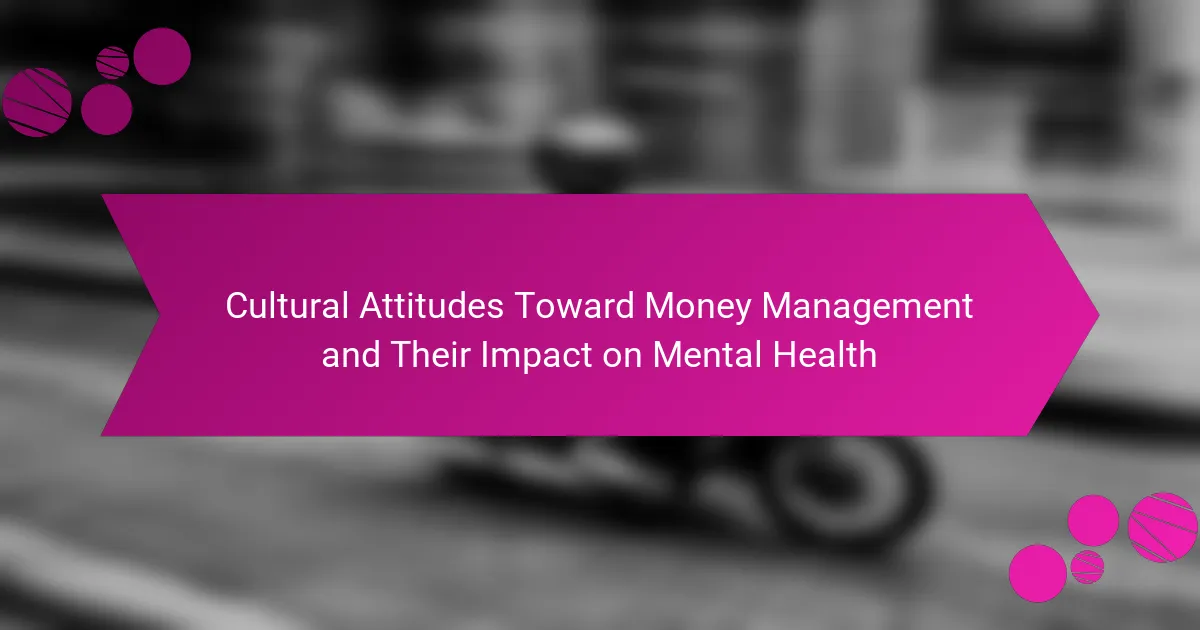Financial literacy programs significantly enhance personal well-being by improving financial decision-making and reducing stress. They equip participants with essential skills for budgeting, saving, and investing. Effective programs focus on practical application and accessibility, while tailored content ensures relevance for diverse demographics. Additionally, community engagement fosters support and knowledge sharing, leading to greater financial security and confidence.
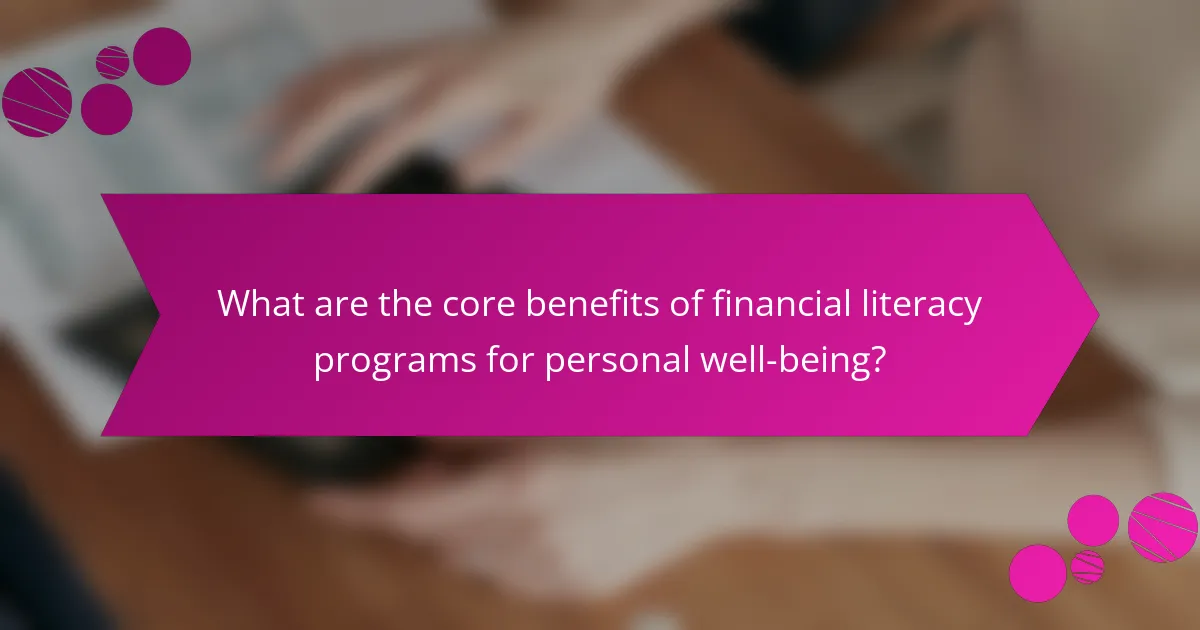
What are the core benefits of financial literacy programs for personal well-being?
Financial literacy programs enhance personal well-being by improving financial decision-making and reducing stress. Participants gain essential skills to manage budgets, save effectively, and invest wisely. As a result, they experience greater financial security and confidence. Studies show that individuals with financial literacy are less likely to face debt-related issues, leading to improved mental health and overall life satisfaction. Furthermore, these programs foster a sense of community and support, encouraging participants to share knowledge and resources.
How do financial literacy programs improve individual financial management skills?
Financial literacy programs enhance individual financial management skills by providing essential knowledge and practical tools. Participants learn budgeting, saving, and investing strategies that promote financial stability. These programs often lead to improved decision-making and increased confidence in managing personal finances. As a result, individuals experience reduced financial stress and greater overall well-being.
What impact do these programs have on reducing financial stress?
Financial literacy programs significantly reduce financial stress by equipping individuals with essential money management skills. Participants often report improved budgeting, saving, and investment strategies, leading to increased financial confidence. As a result, these programs can alleviate anxiety associated with financial uncertainty, fostering overall personal well-being. Studies indicate that individuals who engage in financial literacy programs experience a notable decrease in financial distress, enhancing their quality of life.
What are effective strategies taught in financial literacy programs?
Financial literacy programs teach strategies that enhance personal financial management. Effective strategies include budgeting, saving, investing, debt management, and understanding credit. These skills empower individuals to make informed financial decisions, leading to improved personal well-being. For example, budgeting helps track expenses, while investing fosters long-term wealth accumulation.
How can financial literacy lead to better decision-making in personal finance?
Financial literacy enhances decision-making in personal finance by equipping individuals with essential skills. Improved understanding of budgeting, saving, and investing leads to informed choices, reducing financial stress. Studies show that financially literate individuals are more likely to plan for retirement and avoid high-interest debt. Additionally, programs that promote financial literacy can foster long-term financial well-being, as participants develop critical thinking skills necessary for navigating complex financial landscapes.
What role does financial literacy play in enhancing savings and investment habits?
Financial literacy significantly enhances savings and investment habits by equipping individuals with essential knowledge. Understanding financial concepts fosters better decision-making, leading to increased savings rates and more strategic investments. Research shows that financially literate individuals are 50% more likely to save for retirement. Additionally, financial literacy programs improve budgeting skills, enabling individuals to allocate funds effectively and grow their wealth over time. By developing these skills, participants can navigate financial markets confidently, maximizing their investment potential and securing their financial future.
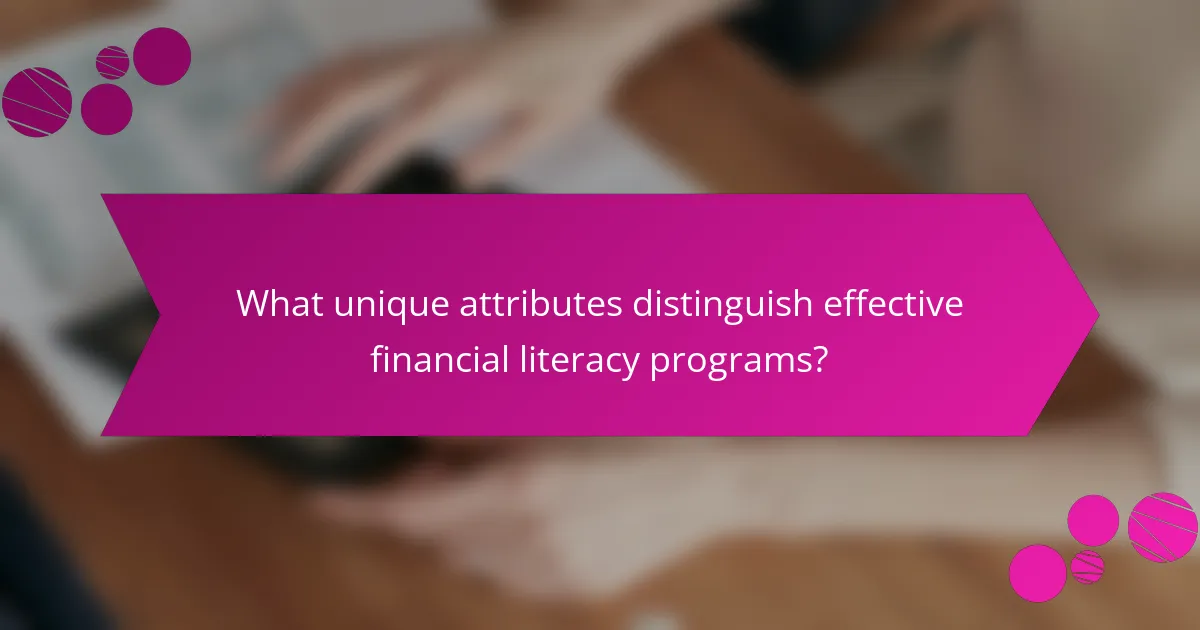
What unique attributes distinguish effective financial literacy programs?
Effective financial literacy programs are distinguished by their focus on practical application, accessibility, and adaptability. These programs often incorporate real-life scenarios, allowing participants to apply concepts to their financial decisions. A unique attribute is their use of interactive tools, such as budgeting apps or simulations, which enhance engagement and retention. Additionally, effective programs tailor content to diverse demographics, ensuring relevance across different age groups and socioeconomic backgrounds. As a result, participants report improved financial confidence and decision-making skills, contributing to overall personal well-being.
How do culturally tailored financial literacy programs enhance engagement?
Culturally tailored financial literacy programs enhance engagement by addressing specific community needs and values. These programs foster a sense of belonging, making participants more likely to interact and learn. Studies show that culturally relevant content increases retention rates by up to 60%. Furthermore, these programs often incorporate local examples, which resonate with participants, enhancing their understanding and application of financial concepts. This unique approach leads to improved financial behaviors and overall well-being within diverse populations.
What innovative formats are used in successful financial literacy programs?
Innovative formats in successful financial literacy programs include interactive workshops, gamified learning platforms, mobile applications, and community-based peer education. These formats enhance engagement and retention by making learning accessible and enjoyable. For instance, gamified platforms often use rewards to motivate users, leading to higher completion rates. Community-based approaches leverage social support, fostering a collaborative learning environment.
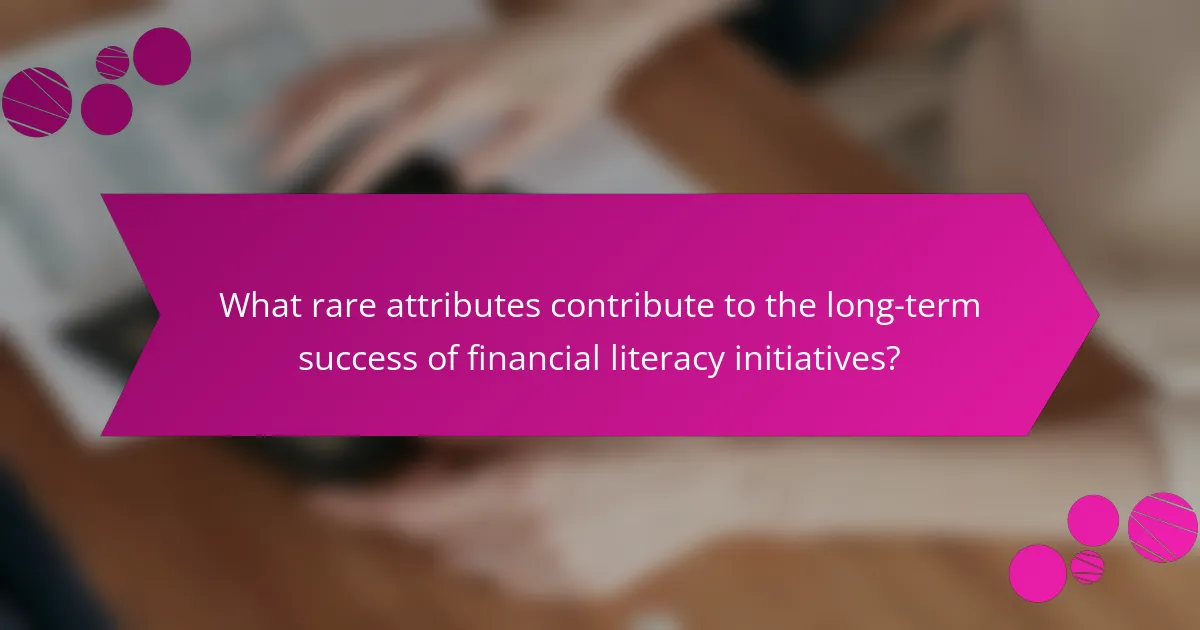
What rare attributes contribute to the long-term success of financial literacy initiatives?
Rare attributes that contribute to the long-term success of financial literacy initiatives include tailored content for diverse demographics, community engagement strategies, and integration with local economic conditions. These unique approaches enhance relevance and accessibility, ensuring sustained participant interest and practical application. For example, programs that adapt materials for specific cultural contexts or age groups often see higher retention rates. Additionally, initiatives that foster partnerships with local businesses can create real-world financial opportunities, further embedding financial literacy into community practices.
Which specific demographics benefit most from targeted financial literacy programs?
Targeted financial literacy programs benefit low-income individuals, young adults, and marginalized communities the most. These demographics often lack access to essential financial education, leading to poor financial decision-making. For example, studies show that low-income participants demonstrate improved budgeting skills after completing such programs. Additionally, young adults gain confidence in managing student loans and credit, while marginalized communities often see increased savings rates.
What are some uncommon challenges faced by financial literacy programs?
Financial literacy programs face several uncommon challenges that can hinder their effectiveness. One significant issue is the lack of engagement from participants, often due to preconceived notions about financial education. Additionally, cultural barriers can impact the receptiveness of different demographics to financial concepts. Resource limitations, including funding and access to qualified instructors, further complicate program implementation. Lastly, measuring the long-term impact of these programs presents a rare challenge, as financial behaviors may take time to manifest.
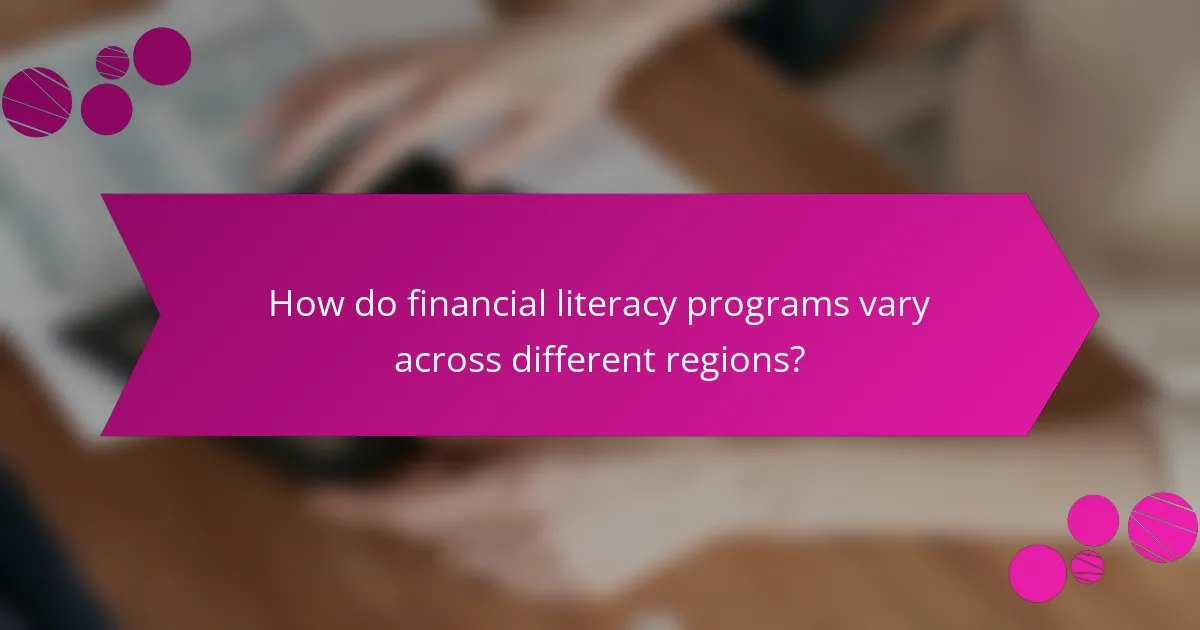
How do financial literacy programs vary across different regions?
Financial literacy programs differ significantly across regions, impacting personal well-being. In developed areas, these programs often focus on investment strategies and advanced financial planning. Conversely, in developing regions, they may emphasize basic budgeting and savings techniques. Regional economic conditions also shape the curriculum, with urban areas typically offering more comprehensive resources than rural locales. Additionally, cultural attitudes toward money influence program effectiveness, highlighting the need for tailored approaches.
What local issues do financial literacy programs address in diverse communities?
Financial literacy programs address local issues such as economic inequality, lack of access to financial resources, and insufficient knowledge about budgeting and saving. These programs empower individuals by providing essential skills to manage personal finances effectively. As a result, they enhance community stability and increase opportunities for upward mobility. Additionally, they foster informed decision-making, which can lead to reduced debt levels and improved overall financial health in diverse communities.
How are financial literacy programs adapted to suit different cultural contexts?
Financial literacy programs are tailored to cultural contexts by incorporating local values and practices. This adaptation enhances engagement and effectiveness. For instance, programs may include community-based examples that resonate with participants’ experiences. Additionally, language and communication styles are adjusted to ensure clarity. Cultural beliefs about money management significantly influence program design, making it relevant and relatable. As a result, these programs foster better financial decision-making aligned with participants’ cultural backgrounds.
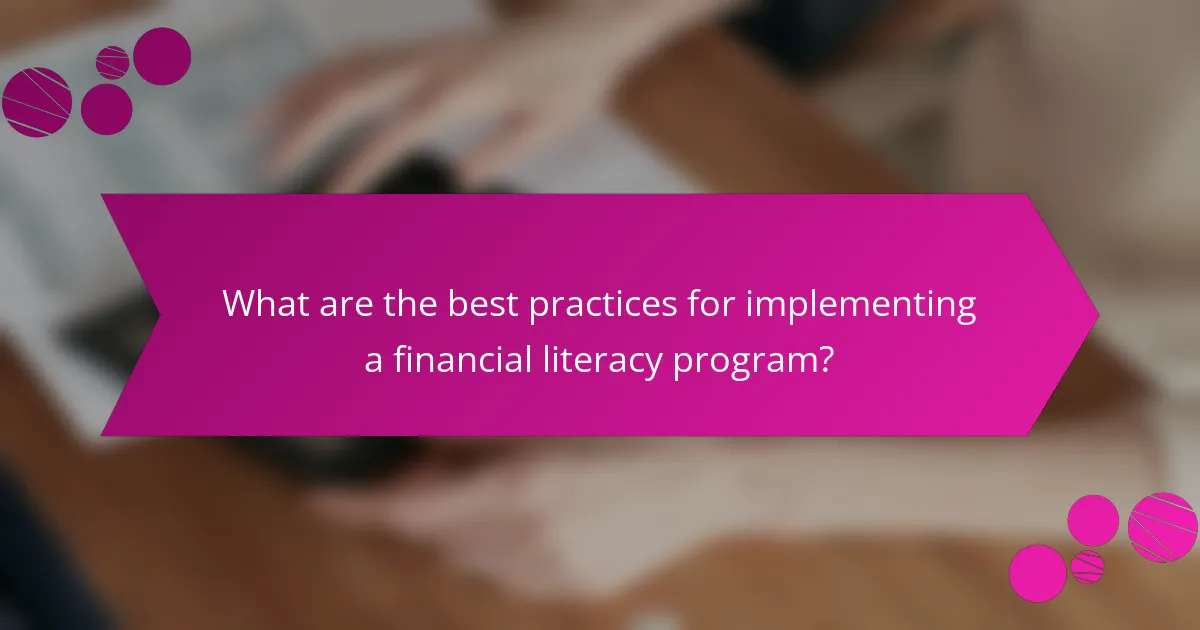
What are the best practices for implementing a financial literacy program?
To implement a financial literacy program effectively, focus on engaging content, practical applications, and ongoing support. Start by assessing the target audience’s needs to tailor the curriculum. Incorporate interactive elements such as workshops and simulations to enhance learning. Utilize credible resources and expert speakers to provide valuable insights. Finally, measure the program’s impact through surveys and feedback to continuously improve.
What common mistakes should be avoided when developing these programs?
Common mistakes when developing financial literacy programs include neglecting audience needs, failing to set clear objectives, and overlooking practical applications. Programs should be tailored to specific demographics to enhance relevance. Clear goals ensure the program has measurable outcomes. Incorporating real-life scenarios helps participants apply concepts effectively. Additionally, inadequate evaluation methods can hinder ongoing improvement and success. Regular feedback is essential for program refinement.
How can individuals maximize the benefits of participating in financial literacy programs?
Participating in financial literacy programs can significantly enhance personal well-being by improving financial decision-making and increasing confidence. To maximize these benefits, individuals should actively engage in all program activities, ask questions, and apply learned concepts in real-life scenarios.
Additionally, setting specific financial goals during the program can help participants focus on relevant content. Networking with peers can provide support and diverse perspectives, enriching the learning experience. Regularly revisiting program materials and seeking further educational opportunities can reinforce knowledge and skills.
As a result, individuals who fully immerse themselves in financial literacy programs are more likely to achieve better financial outcomes and overall well-being.
